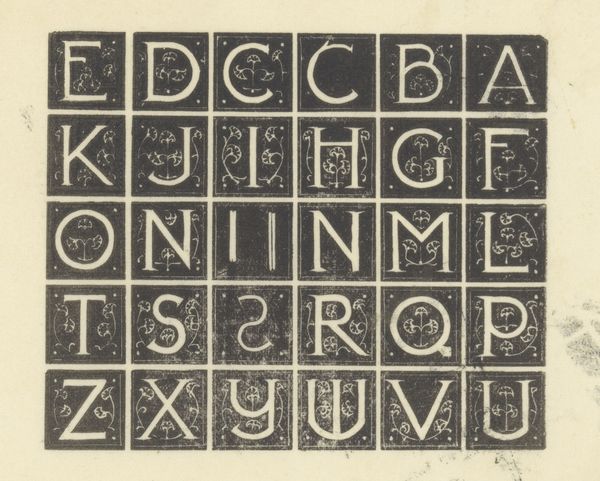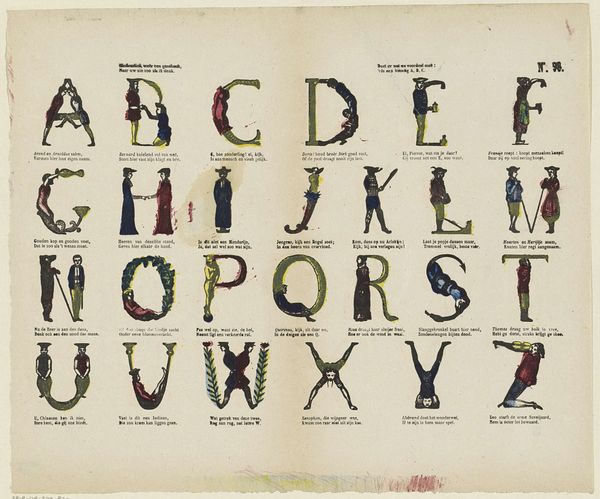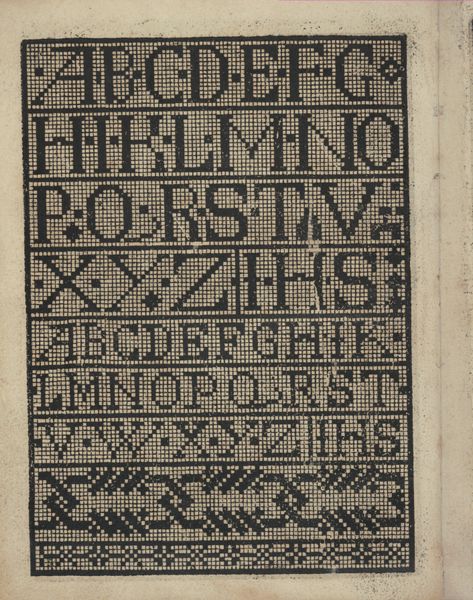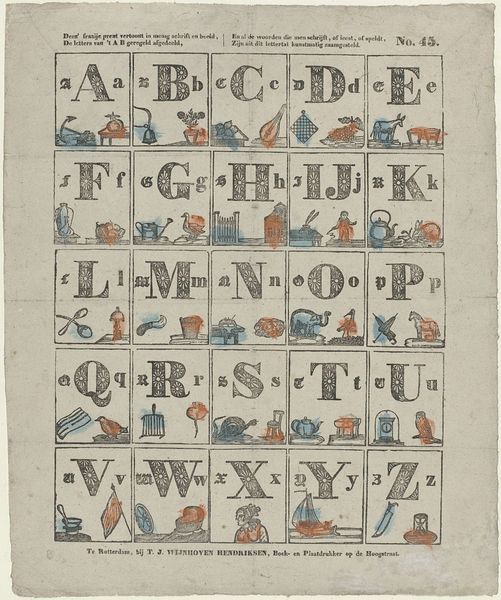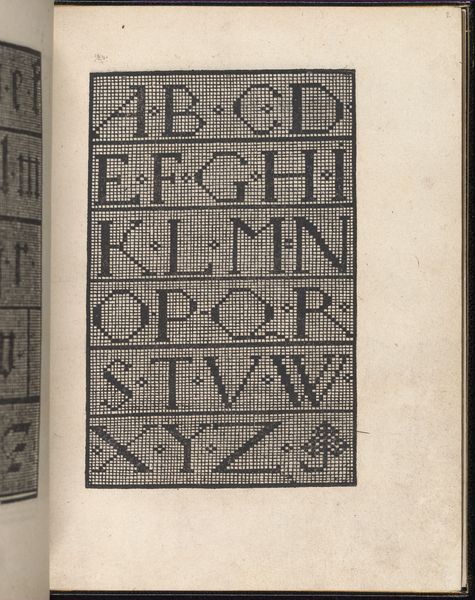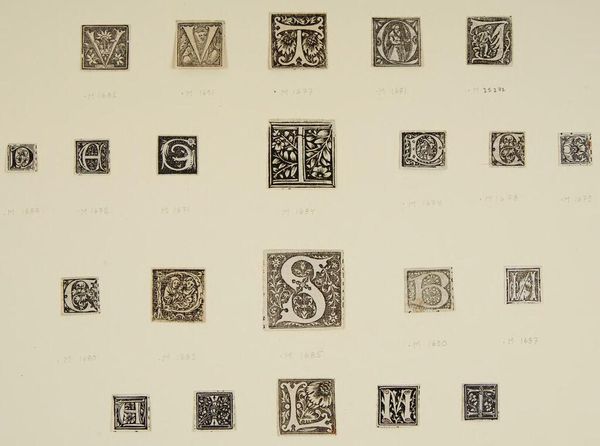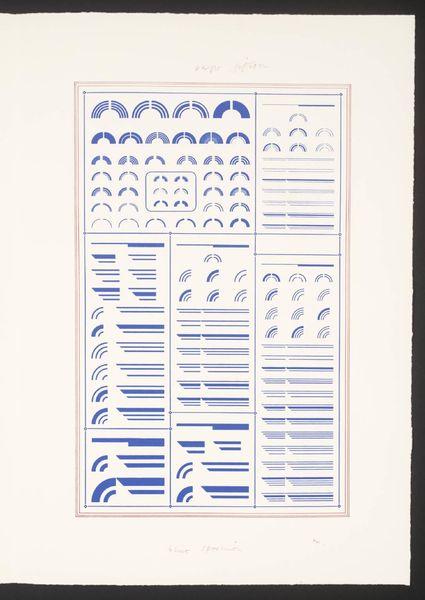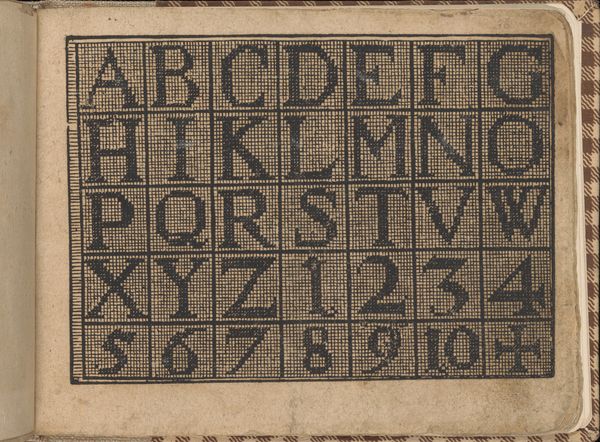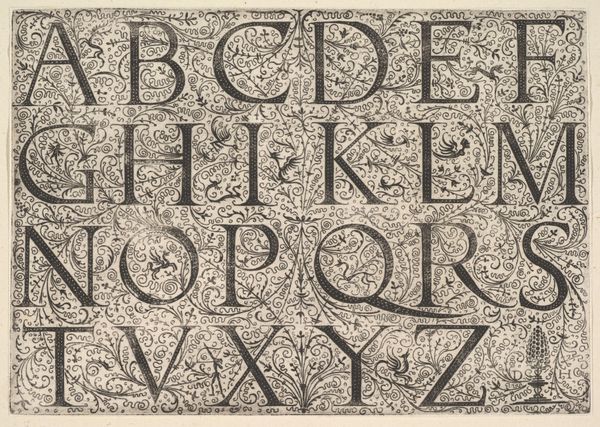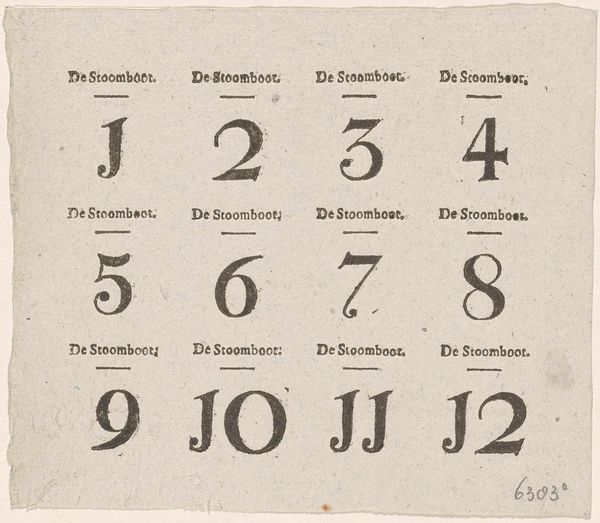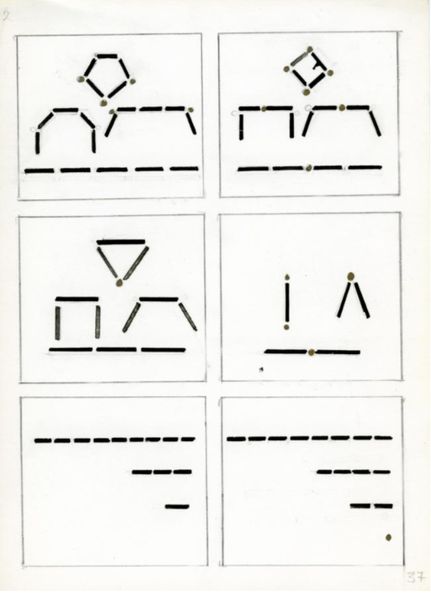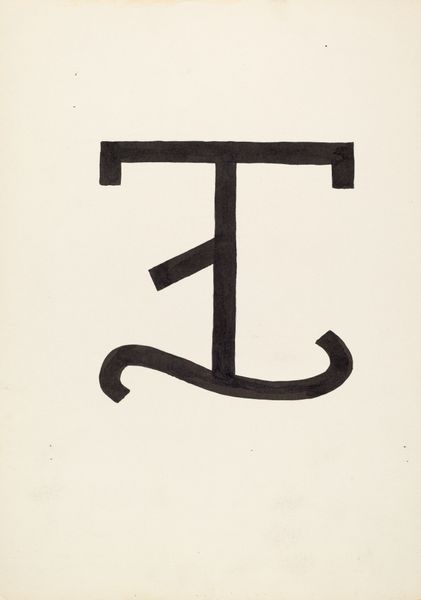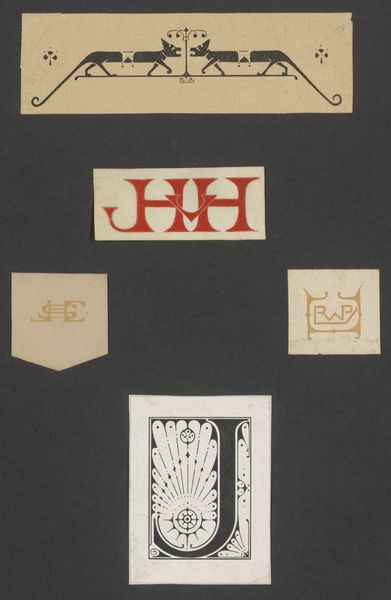
graphic-art, typography
#
font and typography
#
graphic-art
#
photo
#
typeface
#
typographical layout
#
sans serif
#
typography
#
text-heavy
#
geometric
#
thick font
#
sans-serif
#
handwritten font
#
sans serif type
Copyright: Public domain
Editor: Here we have Eric Gill’s "Sample Image for the Font Joanna Nova." It's a graphic art piece demonstrating a typeface. It’s interesting how the different weights and forms create distinct moods; some sections feel quite formal, others almost playful. How do you interpret this work purely from a formalist perspective? Curator: Well, considering its intrinsic qualities, observe how Gill meticulously balances positive and negative space. The interplay between the thick and thin strokes in the letterforms generates a rhythm. Note the contrast between the heavier 'Joanna' and the lighter 'Ditchling' – how does that affect your perception? Editor: It seems almost like a visual hierarchy, with ‘Joanna’ demanding more attention. The shapes feel very geometric to me, almost architectural. Curator: Precisely! Gill’s background certainly influenced his type design. Semiotically, each letter functions as a sign, but together they form words and convey meaning. What feelings do these specific letterforms evoke? Do they appear modern, traditional, or something else entirely? Editor: I find them to be modern, but with a classical touch. It's interesting to think about the design of each letter and its visual impact when it is part of something larger, like a word. Curator: Indeed, examining the micro-elements—the serifs, the curves—allows us to decode Gill's design philosophy and how structural elements create cohesion. Typography, at its core, is a system. By understanding the relationships within this system, we can truly appreciate the artistry and precision of this work. Editor: That makes me think about how fonts can shape our reading experience and influence how we understand written information! Thank you. Curator: A pertinent observation. It reveals how seemingly simple formal choices can have profound effects.
Comments
No comments
Be the first to comment and join the conversation on the ultimate creative platform.
